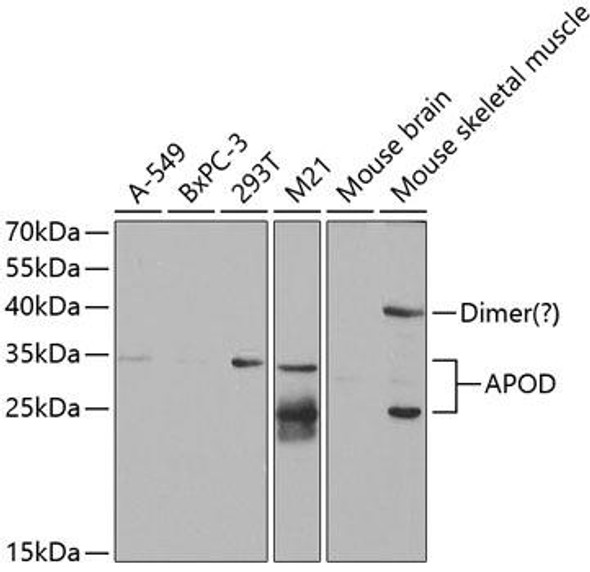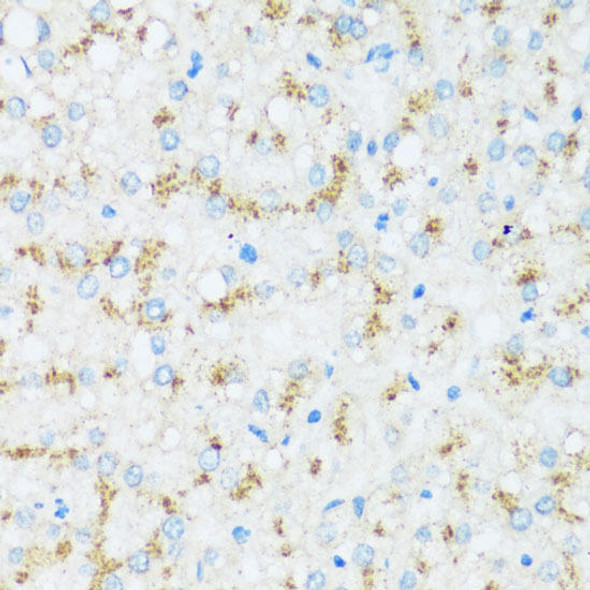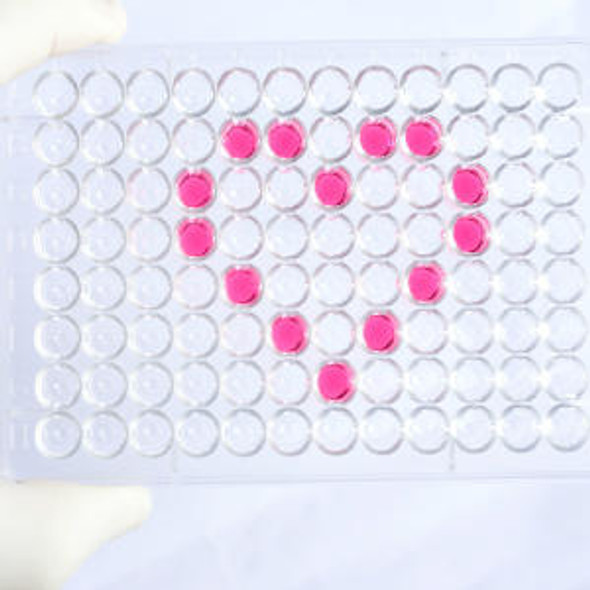Signal Transduction Antibodies 2
Anti-APOD Antibody (CAB16758)
- SKU:
- CAB16758
- Product Type:
- Antibody
- Reactivity:
- Human
- Host Species:
- Rabbit
- Isotype:
- IgG
- Antibody Type:
- Polyclonal Antibody
- Research Area:
- Signal Transduction
Description
| Antibody Name: | Anti-APOD Antibody |
| Antibody SKU: | CAB16758 |
| Antibody Size: | 20uL, 50uL, 100uL |
| Application: | IHC IF |
| Reactivity: | Human |
| Host Species: | Rabbit |
| Immunogen: | Recombinant protein of human APOD. |
| Application: | IHC IF |
| Recommended Dilution: | IHC 1:50 - 1:100 IF 1:50 - 1:100 |
| Reactivity: | Human |
| Positive Samples: |
| Immunogen: | Recombinant protein of human APOD. |
| Purification Method: | Affinity purification |
| Storage Buffer: | Store at -20'C. Avoid freeze / thaw cycles. Buffer: PBS with 0.02% sodium azide, 50% glycerol, pH7.3. |
| Isotype: | IgG |
| Sequence: | Email for sequence |
| Gene ID: | 347 |
| Uniprot: | P05090 |
| Cellular Location: | Secreted |
| Calculated MW: | 21kDa |
| Observed MW: | Refer to figures |
| Synonyms: | APOD |
| Background: | This gene encodes a component of high density lipoprotein that has no marked similarity to other apolipoprotein sequences. It has a high degree of homology to plasma retinol-binding protein and other members of the alpha 2 microglobulin protein superfamily of carrier proteins, also known as lipocalins. This glycoprotein is closely associated with the enzyme lecithin:cholesterol acyltransferase - an enzyme involved in lipoprotein metabolism. |
| UniProt Protein Function: | APOD: APOD occurs in the macromolecular complex with lecithin- cholesterol acyltransferase. It is probably involved in the transport and binding of bilin. Appears to be able to transport a variety of ligands in a number of different contexts. Belongs to the calycin superfamily. Lipocalin family. |
| UniProt Protein Details: | Protein type:Lipid-binding; Secreted, signal peptide; Secreted Chromosomal Location of Human Ortholog: 3q29 Cellular Component: cell soma; dendrite; endoplasmic reticulum; extracellular space; perinuclear region of cytoplasm Molecular Function:cholesterol binding; protein binding Biological Process: axon regeneration in the peripheral nervous system; brain development; glucose metabolic process; lipid metabolic process; negative regulation of focal adhesion formation; negative regulation of protein import into nucleus; negative regulation of smooth muscle cell proliferation; response to axon injury; response to drug; response to reactive oxygen species; tissue regeneration |
| NCBI Summary: | This gene encodes a component of high density lipoprotein that has no marked similarity to other apolipoprotein sequences. It has a high degree of homology to plasma retinol-binding protein and other members of the alpha 2 microglobulin protein superfamily of carrier proteins, also known as lipocalins. This glycoprotein is closely associated with the enzyme lecithin:cholesterol acyltransferase - an enzyme involved in lipoprotein metabolism. [provided by RefSeq, Aug 2008] |
| UniProt Code: | P05090 |
| NCBI GenInfo Identifier: | 114034 |
| NCBI Gene ID: | 347 |
| NCBI Accession: | P05090.1 |
| UniProt Secondary Accession: | P05090,Q6IBG6, B2R579, D3DNW6, |
| UniProt Related Accession: | P05090 |
| Molecular Weight: | 21,276 Da |
| NCBI Full Name: | Apolipoprotein D |
| NCBI Synonym Full Names: | apolipoprotein D |
| NCBI Official Symbol: | APOD |
| NCBI Protein Information: | apolipoprotein D |
| UniProt Protein Name: | Apolipoprotein D |
| Protein Family: | Apolipoprotein |
| UniProt Gene Name: | APOD |
| UniProt Entry Name: | APOD_HUMAN |
View AllClose






